
Services > Radiofrequency Surgery
Radiofrequency Surgery


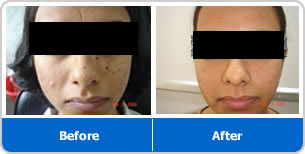
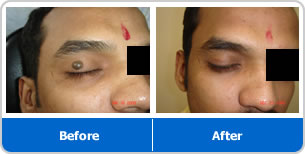
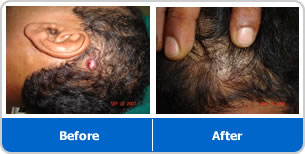
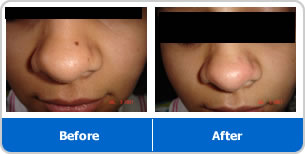
he Electrocautery machine has been standard equipment in the dermatologist’s arsenal since ages. Skin cautery, which is a finer version of surgical cautery is being used for removal of amenable skin lesions. The skin cautery achieves tissue destruction by two methods: electric current or spark and secondly by producing heat. This heat production is uncontrolled and a lateral spread of this heat also destroys normal tissue unseen on gross examination. This leads to a larger area of tissue damage than intended, subsequently leading to visible scar or hyper-pigmentation. Principally, electro-cautery produces current of less than 2 megahertz frequency and this is the cause of excess heat dissipation.
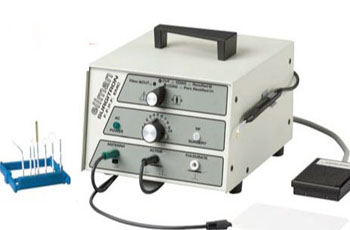 Radiofrequency (RF) surgery involves passage of radio waves at the frequency of 1.5 to 4.5 MHz. In case of skin lesions, the most commonly used frequency is 3.8 MHz. A radio-surgical unit consists of an electrode, a ground plate and a transformer. The radio waves generated, travel from the electrode tip to the lesion and return to the unit through the ground plate. Radio energy produces steam and vaporizes the tissue fluid resulting in cutting and coagulation of the tissues.
Radiofrequency (RF) surgery involves passage of radio waves at the frequency of 1.5 to 4.5 MHz. In case of skin lesions, the most commonly used frequency is 3.8 MHz. A radio-surgical unit consists of an electrode, a ground plate and a transformer. The radio waves generated, travel from the electrode tip to the lesion and return to the unit through the ground plate. Radio energy produces steam and vaporizes the tissue fluid resulting in cutting and coagulation of the tissues.
The power settings can be adjusted to obtain the type of radio wave desired.
Different types of electrodes are used depending on the type of lesion e.g. fine needle electrode, wire loop electrode, scalpel blade electrode etc. The lesion should be touched with the tip of the electrode. It generates very little heat as compared to conventional electro-cautery. This results in negligible collateral damage, resulting in faster healing and minimal scarring.
Uses of RF in dermatosurgery:
-
Removal of skin tags, warts, seborrhoic keratoses, syringoma, trichoepithelioma.
-
Removal of melanocytic naevi, telangectasias, early skin tumors.
-
Skin biopsies and grafts.
-
Resurfacing of scars (chicken pox, acne etc.)
-
Primary resection of keloids.
-
Debulking of skin tumors.
-
Depilation.
-
Resurfacing in case of Rhinophyma, Darier’s disease etc
-
Blepharoplasty.
-
Hair restoration surgery: scalp reduction, scalp lifting, scalp flaps.
-
Excision of plantar fibromata, ingrowing toe nail.
-
Non abalative face lift.
Advantages of radio-surgery:
1. Rapid healing.
2. Minimal or no bleeding.
3. Aesthetically pleasing scars or no scars.
4. Lesser operating time.
5. Office procedure.
As with any equipment, over treatment may produce greater tissue destruction & scarring. To conclude, radio-surgery is a faster evolving technique being effective, simple, quick & cost effective

